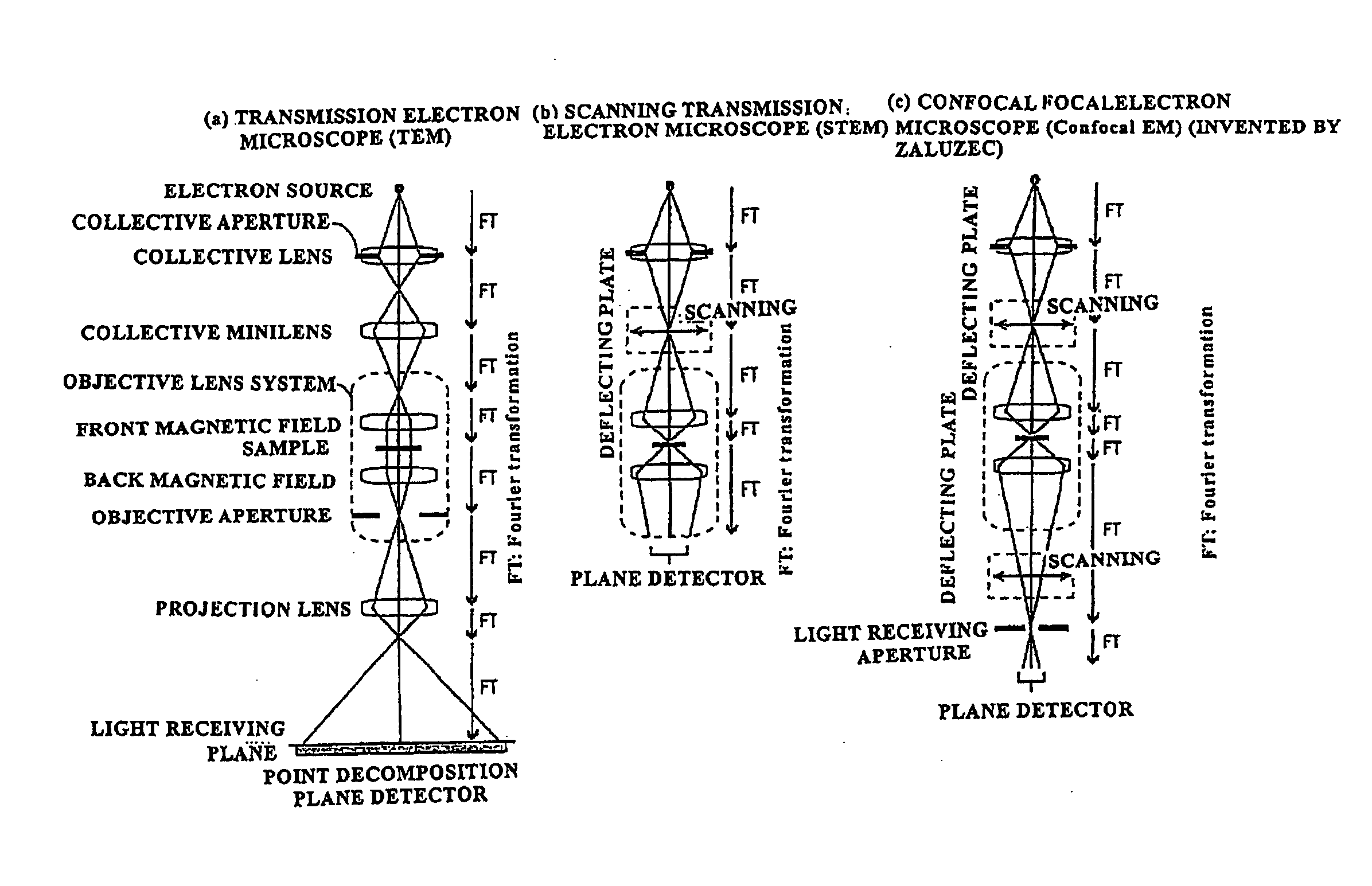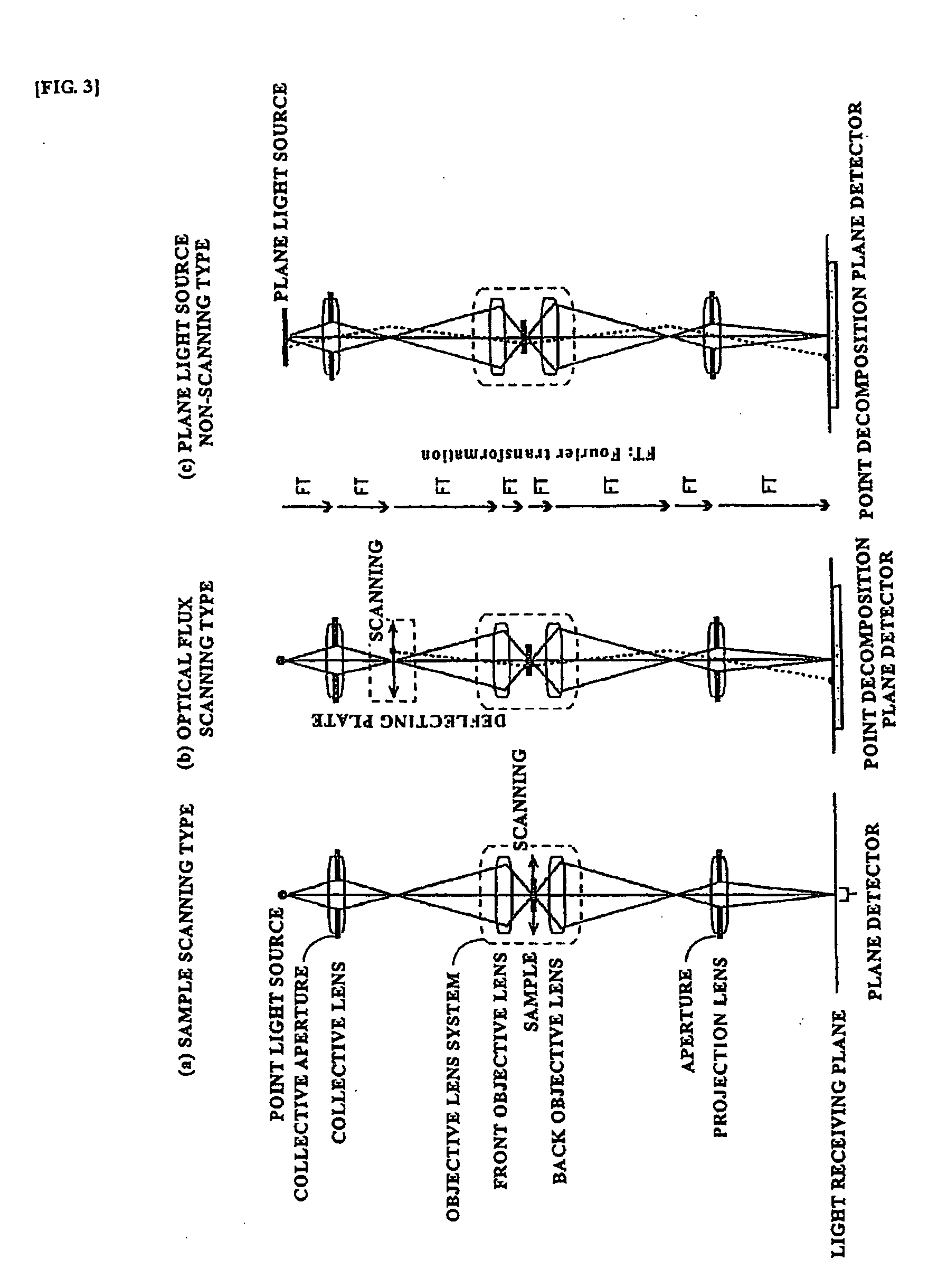Phase Contrast Electron Microscope Device
a phase contrast and electron microscope technology, applied in the direction of instruments, nuclear engineering, material analysis using wave/particle radiation, etc., can solve the problems of reducing the resolution, reducing the signal intensity caused by the electron beam, and induced image distortion caused by the electric charge or signal intensity decrease caused by the loss of electron beams, etc., to achieve small image distortions resulting from defocusing and improve image quality in the depth direction
- Summary
- Abstract
- Description
- Claims
- Application Information
AI Technical Summary
Benefits of technology
Problems solved by technology
Method used
Image
Examples
Embodiment Construction
[0063]i) Conventional Electron Microscope
[0064]First, a conventional electron microscope will be explained using FIGS. 1(a), (b), (c). In FIGS. 1(b), (c), no reference symbols are assigned to the structural elements identical to those of FIG. 1(a).
[0065]In a TEM, as shown by way of example in FIG. 1(a), a point light source (point electron source) is converted into a parallel beam (parallel electron wave) by a lens system to irradiate a sample, and the light (electron wave) that has been transmitted through the sample is expanded by a lens system, and caused to fall on a light receiving plate of a point decomposition plane detector such as a photographic detector or a CCD (Charge Coupled Device) camera to produce an image. A parallel light containing scattered electrons from the sample is once collected at an aperture stop and then the so-called image is produced on the entire light receiving plane by a projection lens. Therefore, the image pickup is performed by opening a shutter, ...
PUM
| Property | Measurement | Unit |
|---|---|---|
| thickness | aaaaa | aaaaa |
| electron microscope | aaaaa | aaaaa |
| magnetic field | aaaaa | aaaaa |
Abstract
Description
Claims
Application Information
 Login to View More
Login to View More - R&D
- Intellectual Property
- Life Sciences
- Materials
- Tech Scout
- Unparalleled Data Quality
- Higher Quality Content
- 60% Fewer Hallucinations
Browse by: Latest US Patents, China's latest patents, Technical Efficacy Thesaurus, Application Domain, Technology Topic, Popular Technical Reports.
© 2025 PatSnap. All rights reserved.Legal|Privacy policy|Modern Slavery Act Transparency Statement|Sitemap|About US| Contact US: help@patsnap.com



